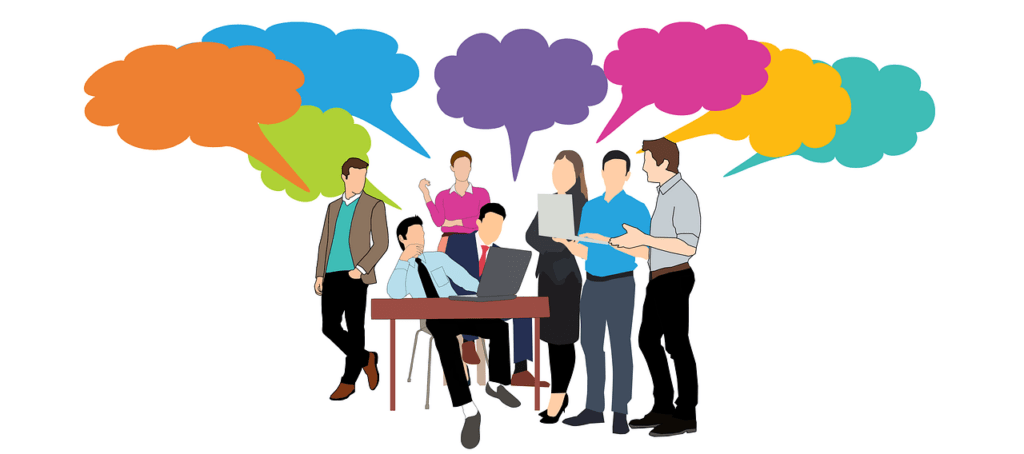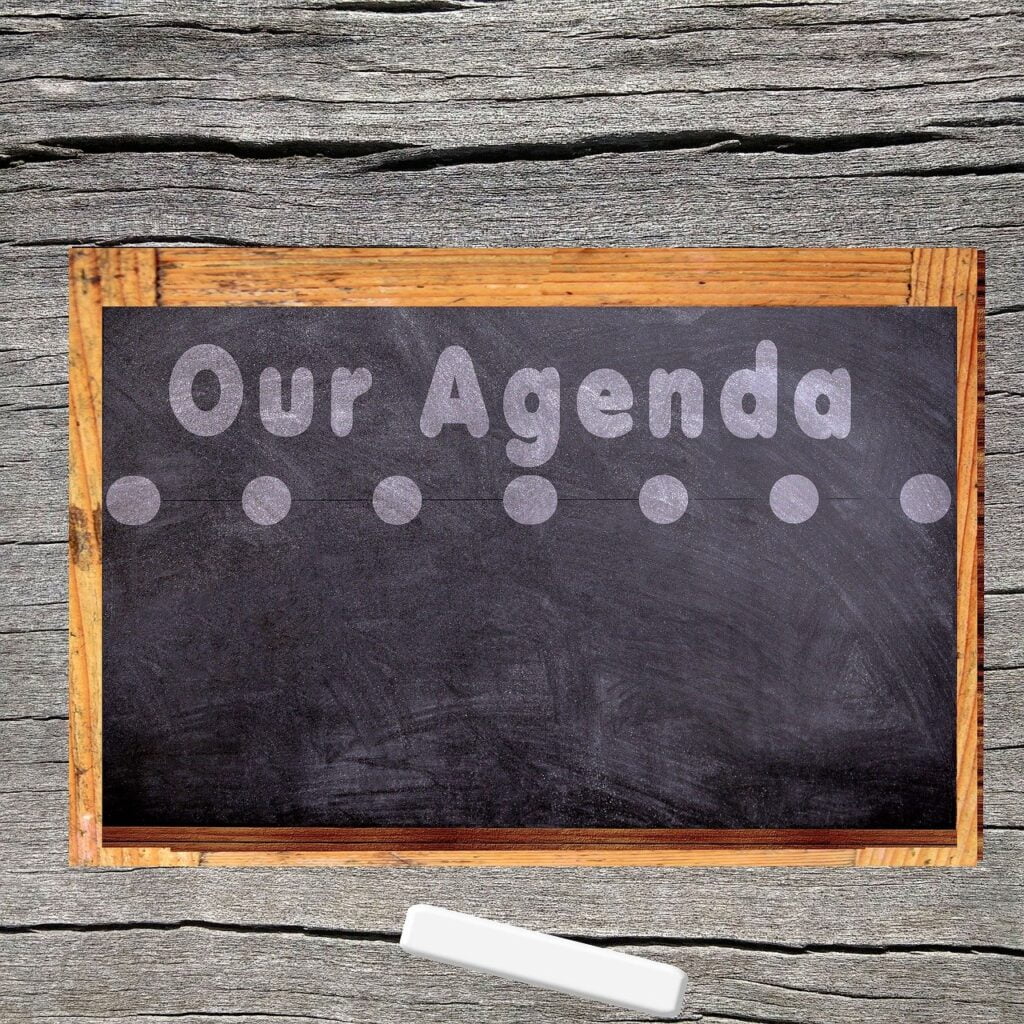Formal group discussions serve several important purposes in bringing people together constructively.
First, they help build connections and relationships among group members. When people come together in a focused discussion, they get to know each other better and start building trust. This social connection is invaluable.
Second, group discussions elicit diverse perspectives around an issue or topic. With input from different group members, more viewpoints are shared. This diversity of thought leads to more creative ideas and solutions.
Third, group discussions are an effective way to solve problems. By harnessing the collective thinking of the group, you can analyze issues from multiple angles and brainstorm innovative solutions. This is especially helpful for complex problems.
Finally, discussions allow groups to make decisions together and generate ideas collaboratively. Rather than decisions handed down hierarchically, groups can come to a consensus about the best path forward. Groups can combine their skills and insight to ideate original concepts.
In summary, leading formal group discussions provides the structure to reap the benefits of diverse thinking, social bonding, creative solutions, and collective decisions. Bringing people together in purposeful dialogue is an impactful way to move groups forward.
Jump To Section
What is a Formal Group Discussion?
A formal group discussion is a planned and structured conversation between several people on a specific topic. Unlike informal discussions that can meander, formal discussions have a clear objective and follow certain rules and processes.
In a formal discussion, there is usually an agenda that outlines the purpose, topics to be covered, and expected outcomes. The discussion has a designated leader or facilitator who guides the conversation. There are often protocols in place about who can speak when and for how long.
The purpose of a formal discussion is to share information, gather input, analyze an issue, solve a problem, or make a decision. There are ground rules for respectful participation like allowing people to finish speaking before responding. The discussion aims to meet the stated goal within the allotted timeframe.
With structure and organization, formal group discussions can lead to productive exchanges of ideas and perspectives. The insights shared can inform better solutions. A skilled facilitator can create an inclusive environment where everyone feels heard.
How is a Formal Group Discussion Different from Informal Discussions?

A formal group discussion is more structured compared to informal discussions. Here are some key differences:
- Agenda – A formal discussion will have a clear agenda outlined at the start. This sets expectations on the topics to be covered and helps keep the conversation focused. An informal discussion may meander between different subjects.
- Facilitator – A formal discussion will have an assigned facilitator to guide the conversation. They help set the agenda, manage timekeeping, ensure everyone gets a chance to contribute, and summarize key points. Informal discussions tend to be more free-flowing without a designated facilitator.
- Goals – Formal discussions aim to achieve specific goals, such as generating ideas, making a decision, or solving a problem. Participants are aware of the intended purpose. Informal discussions tend to be more social and open-ended, without defined goals.
- Structure – With a facilitator guiding the conversation, a formal discussion follows a more structured flow. Informal discussions are generally more unstructured and spontaneous.
The added structure helps ensure formal group discussions stay productive and achieve the intended outcomes. However informal discussions have their place for more casual sharing of perspectives between colleagues.
Who Can Lead Group Discussions?
Formal group discussions require a leader or facilitator to guide the conversation. The person selected to lead should have strong facilitation skills to keep the discussion on track. Here are some tips for choosing an appropriate discussion leader:
- Assign a facilitator. Rather than assuming someone will lead organically, formally designate a facilitator. Choose someone comfortable guiding group interactions. They should be able to redirect off-topic conversations.
- Choose an appropriate leader. Select someone well-versed in the discussion topic. They should understand the goals of the discussion. Subject matter expertise lends credibility.
- Delegate when needed. If no one has the right skills to lead, delegate facilitation to someone trained in the role. Or, have a content expert co-facilitate with someone who has strong facilitation abilities.
The facilitator plays a pivotal role. Their leadership steers the direction of the conversation. Choose someone who can focus the discussion while ensuring all voices are heard. With the right facilitator, your group is positioned for an engaging and productive discussion.
Where Should You Hold the Discussion?
When leading a formal group discussion, it’s important to select the right setting and space for the event. This will help ensure participants can engage fully and productively.
The ideal setting is a quiet, private, and comfortable space. Background noise and interruptions should be minimized so everyone can hear each other. If meeting in person, choose a room that is enclosed and away from busy common areas. For virtual discussions, make sure all participants have access to a disturbance-free environment.
Consider seating arrangements depending on group size and goals. For small groups, a circular set-up allows participants to see each other. For larger groups, theater-style rows work better. If breakout conversations are planned, have small tables or groupings of chairs.
Virtual platforms provide flexible options as well. Small groups can use video conferencing to interact face-to-face through gallery view. Larger groups may prefer a webinar format with audio and screen-sharing. Polls, chat, and breakout rooms help keep online participants engaged.
The space and layout should enable a collaborative, inclusive discussion where everyone has a voice. This provides a foundation for the group to connect and have a meaningful dialogue.
How Do You Prepare the Agenda?

Before leading a formal group discussion, you need to prepare a clear agenda to keep the conversation focused and productive. Here are some tips for creating an effective agenda:
- Set clear objectives – Determine the purpose and goals of the discussion. What questions do you want answered? What decisions need to be made? Defining objectives upfront helps guide the conversation.
- Create a schedule – Outline the key discussion topics and determine how much time to spend on each one. Scheduling the agenda helps you manage time and ensure all topics get covered.
- Send in advance – Circulate the agenda to participants beforehand so everyone comes prepared. Sending materials in advance leads to more informed and engaged discussions.
- Leave room for questions – While scheduling agenda topics, remember to leave time at the end for unanswered questions and additional discussion. Remaining flexible allows you to address participant needs.
Creating a well-defined agenda is crucial to keeping formal group discussions productive and achieving your goals. Set clear objectives, schedule agenda items, distribute materials early, and leave room for questions.
How Do You Set Ground Rules?
Setting clear ground rules at the beginning of a formal group discussion is crucial to ensure the discussion stays productive and respectful. The facilitator should introduce some basic ground rules that all participants agree to follow. Here are some important ground rules to establish:
Respect and listen to each other. Every participant deserves to share their perspective without interruption. Encourage active listening by having one person speak at a time. Participants should avoid criticizing others’ views.
Maintain confidentiality. The facilitator should clarify if the discussion contents are confidential. If so, participants should not share details outside the group without permission. This allows for more open and honest dialogue.
Phones away. All participants should put their phones on silent and avoid checking them during the discussion. This prevents disruptions and encourages active engagement from all members.
Participate to your comfort level. No one should feel pressured to speak. However, the facilitator should encourage broad participation by creating a safe space for sharing. Quieter group members may need gentle prompting to provide input.
Establishing these simple ground rules upfront sets the tone for a productive, respectful formal group discussion where all participants feel comfortable contributing. Referring back to the ground rules can help refocus the conversation if needed. Setting expectations creates an environment conducive to meaningful dialogue.
How to Introduce the Discussion Topic?
When leading a formal group discussion, it’s important to properly introduce the topic to set the right tone and get things started on the right foot. Here are some proven tips:
First, clearly explain the purpose and goals of the discussion. Let participants know why you are having this conversation and what you hope to accomplish together. Articulating the objectives upfront will provide crucial context that helps everyone engage in a meaningful way.
Next, consider asking an opening question that relates to the topic and invites people to share their initial thoughts. This gets the discussion going and gives you a sense of where participants are starting from. Frame the opening question carefully to spark interest and reflection.
Finally, take a moment to frame the overall conversation. Offer any background needed to understand the issue and why it matters. Define key terms that will help guide the dialogue. Outline any parameters or guidelines to keep in mind. Providing this big-picture view will equip participants for a productive discussion.
Successfully introducing the topic lays the groundwork for people to openly exchange perspectives, insights, and ideas. Following these tips will help launch your formal group discussion in the right direction.
How to Engage All Participants?
Engaging all members in a formal group discussion can be challenging. Some participants may naturally dominate the conversation, while others remain quiet. As the discussion leader, it’s important to make sure everyone has a chance to contribute. Here are some proven tips:
- Go-around response: One simple technique is to go around the group and have each person respond to a question or prompt. This ensures even the quieter voices get heard. Let people know in advance you’ll be doing a go-around, so they can prepare thoughts.
- Direct questions: Don’t just rely on open-ended questions to the whole group. Directly ask quieter individuals for their perspective. Use their name and make eye contact to draw them in. However, don’t put anyone on the spot. Give them time to gather thoughts.
- Quieter voices: Check in with the less vocal participants during lulls in the discussion. Ask if they have anything to add or if they need clarification. Gently encourage, but don’t pressure participation. Understand some may prefer to actively listen rather than speak up. Seek their input in other ways.
The key is making sure everyone feels included, heard, and able to contribute in their own way. As a facilitator, balance engaging the group as a whole with bringing in individual voices. This takes awareness and intentional effort but pays off in a rich discussion.
How Do You Wrap Up the Discussion?
When it’s time to wrap up a formal group discussion, it’s important to bring closure effectively. Here are some proven tips:
- Summarize key points from the discussion. As the discussion leader, briefly go over the main topics covered and conclusions reached. This helps reinforce the key takeaways and important points for everyone.
- Highlight any action items or next steps. If decisions were made or tasks assigned, reiterate those briefly. Make sure everyone is clear on what needs to happen going forward as a result of the discussion.
- Evaluate how the discussion went. Get feedback from the group on what worked well and what could be improved next time. As the leader, share your own perspective too. This allows everyone to provide input for future discussions.
- Thank the participants for their time and contributions. Show appreciation for people making the time and effort to actively participate. This creates goodwill and inclusion.
- End on a positive note. If appropriate, have the group do a closing exercise or reflection that ends things in an upbeat, forward-looking tone. This enables people to leave feeling energized and optimistic after a productive discussion.
Effectively wrapping up a formal group discussion ensures you cover the key points, establish the next steps, get feedback for improvement, express gratitude, and send people away feeling good about a discussion well done. Using these proven tips will help you stick the landing and achieve meeting closure in a successful way.


